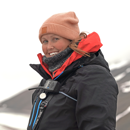Choices, choices... It’s one of those rare, calm days in Svalbard. The wind has disappeared, the sea lies still like glass, and a soft, watery sun brightens the raw Arctic landscape. Perfect weather for a morning hike.
Today, there’s a twist; due to local landing regulations, we need to divide our group between two nearby islands: Krossøya and Søre Russøya.
Krossøya is the smaller of the two, with gentle terrain and fewer elevation gains – ideal for a more relaxed walk. Søre Russøya offers more space, more height, and a slightly more demanding route. We decide to split: a “soft” hike on Krossøya, and a “strenuous” one on Søre Russøya.
I choose to lead the relaxed group to Krossøya. The island, part of the Nordaust-Svalbard Nature Reserve, is a protected and strictly regulated wilderness, one of Norway’s largest conservation areas. It’s a place of subtle beauty and surprising history.
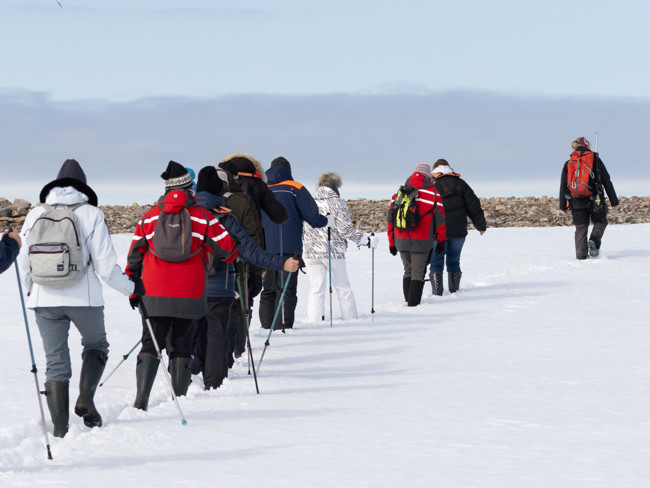

We step ashore with two Zodiacs and begin our hike along the shoreline. Right away, we need to watch our step. Common eiders are nesting on the beach, camouflaged so expertly that they’re nearly invisible. It’s only at the last moment we notice a few of them, sitting tightly on their nests. We carefully wind our way around them, giving them the peace they deserve.
As we move further inland, we come across something unexpected: a whale vertebra, lying proud on a ridge. It rests on what’s known as an elevated beach, formed by the slow rebounding of the land after the last Ice Age. Around the bones, we see a burst of lush vegetation, clearly nourished by the decaying organic material. Mosses and lichens create a bright green contrast against the surrounding grey terrain, the rest of the island feels almost like a lunar landscape: dry, rocky, and silent.
There are no paths on this remote island. Navigation is intuitive and guided by instinct, experience, and the terrain. As we approach a lingering snowfield on our way to the island’s high point, we fall into single file. The safest and easiest way to cross the snow. The snow is old and rotten, softened by the season, but still passable. Each step crunches underfoot as we thread our way across, focused and steady.
At the top of the ridge, we reach a wooden cross. It’s this cross that gave the island its name “Krossøya,” meaning “cross island.” It’s one of only two intact Russian Orthodox crosses left in Svalbard, originally placed here by Pomor hunters centuries ago. These crosses were spiritual markers and navigation aids, connecting faith to survival in this remote land.
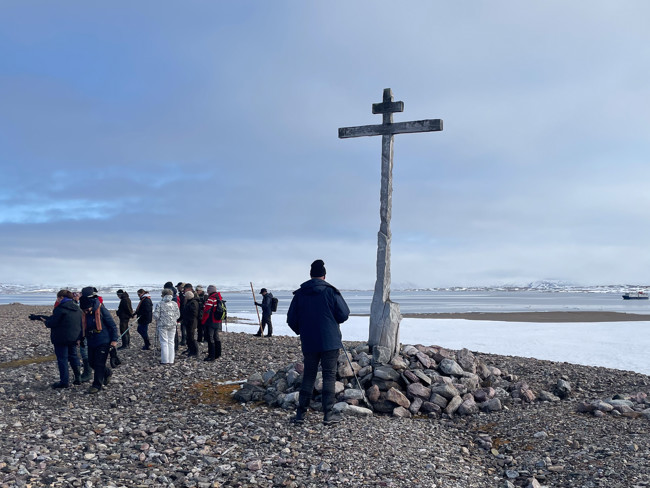
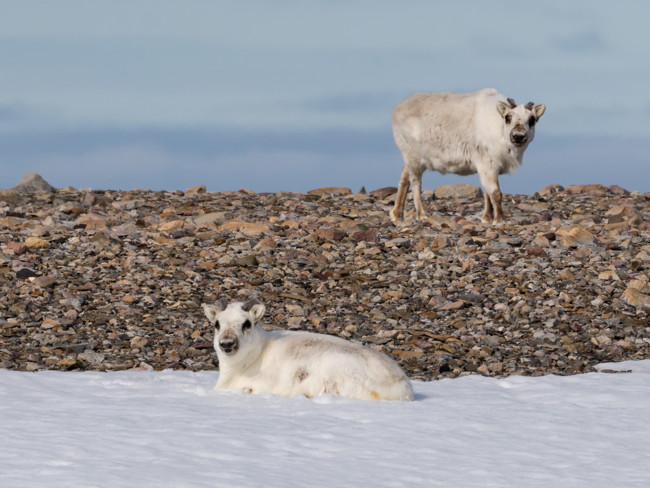
All around us, scattered among the stones, we find stromatolites, fossil-like formations created by microbial mats, some dating back nearly a billion years. The bedrock here is part of the ancient Hecla Hoek formation, rich in geological history. Nearby, the rocks display intriguing octagonal freeze-thaw patterns, shaped over millennia by Svalbard’s intense Arctic freeze-thaw cycles.
Then Erik, my fellow guide, spots movement in the distance. On the northern side of the island, four reindeer graze quietly among the rocks. We slowly make our way toward them. They are feeding on lichens and reindeer moss, scraping gently with their muzzles in search of these hardy Arctic plants. As we get closer, all four raise their heads. But instead of fleeing, they pause, assess us, and.. Incredibly begin walking calmly and curiously toward us. It’s a quiet, humbling moment of connection: eye contact with wild animals who choose to share space with us, on their terms.
Eventually, we begin our descent back toward the shoreline. From the ridge above, we had already seen movement on the tideline. As we reach the beach, we’re rewarded with a close look at three ‘’grey phalaropes’’, feeding actively near the water’s edge. Nearby, a purple sandpiper hops among the wet stones, seemingly undisturbed by our presence.
What began as a simple walk across what looked like a lifeless, moon-like island, became a morning full of history, rich encounters: ancient fossils, marine relics, reindeer at ease, nesting birds, and the delicate balance of life in one of the Arctic’s quietest places.
And that is the true wonder of the Arctic. Even in the most barren places, life is always present, for those who walk slow enough to notice.
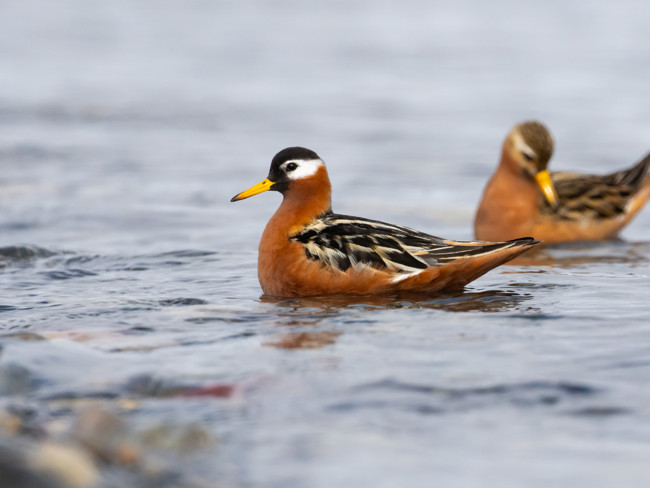
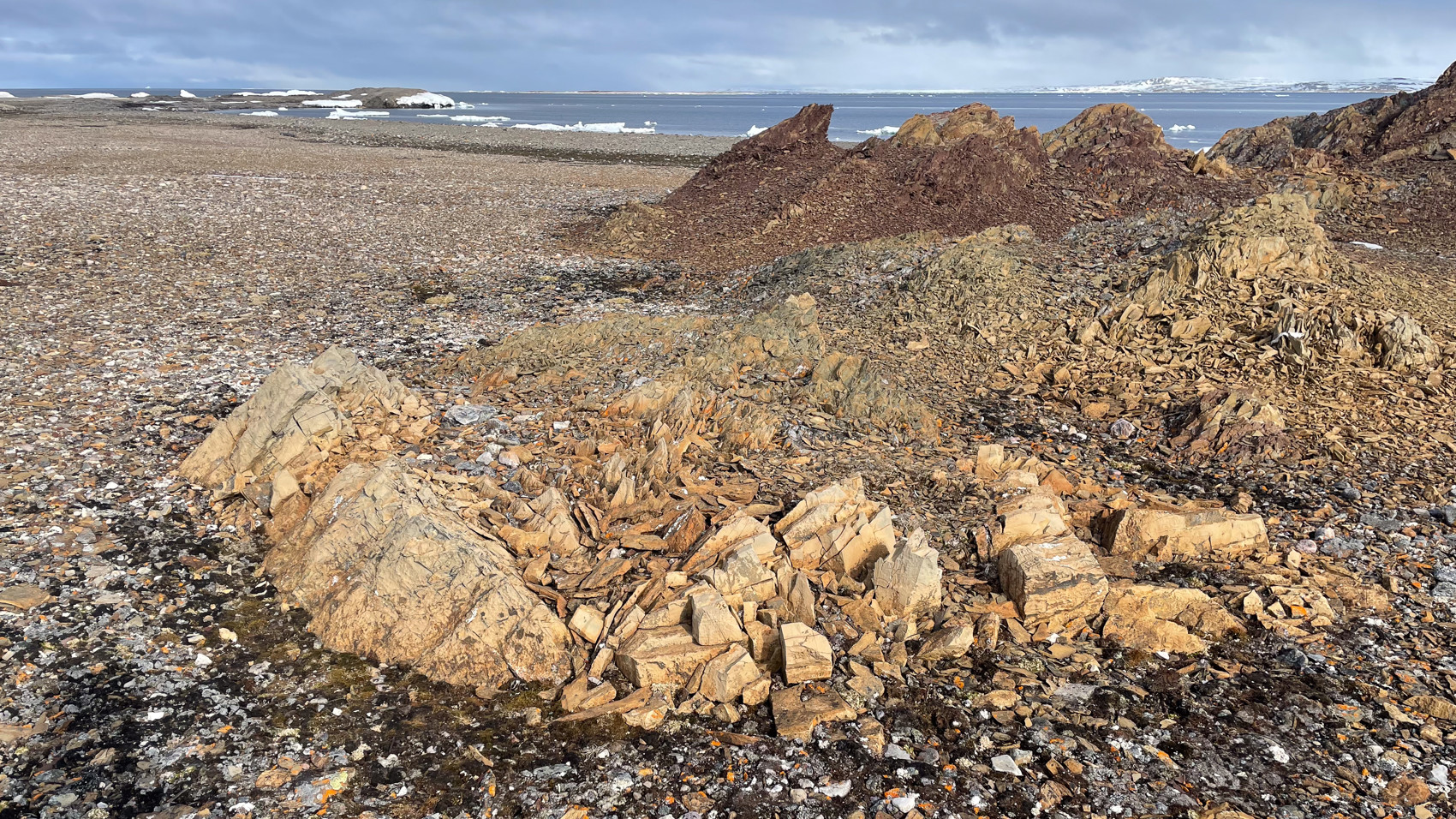
Please note: Depending on the lens used for a photo or video shot an animal may appear to be closer than it is. We always follow strict wildlife guidelines to ensure that we do not cause any disturbance.


